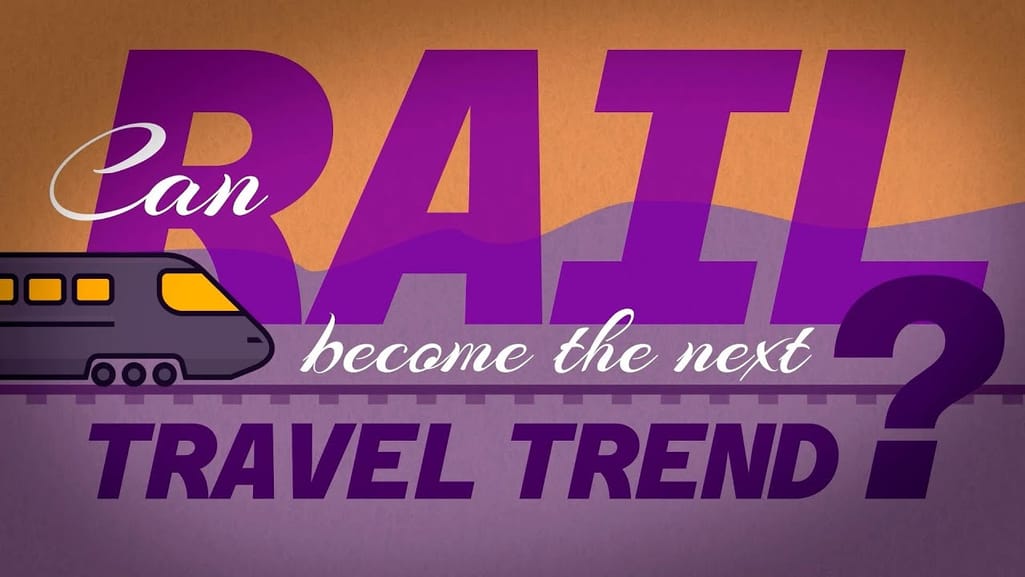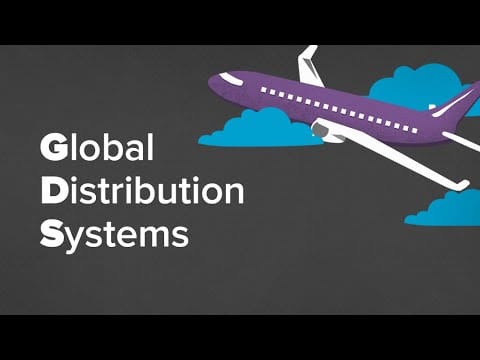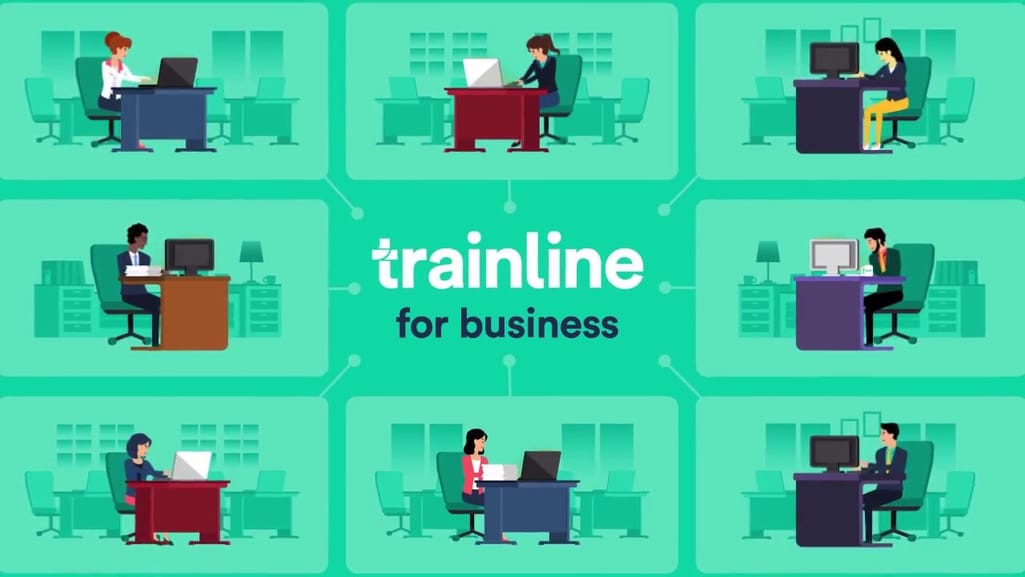One in five travelers used a train on their last trip. Sounds like a lot, right? And yet, rail transportation is one of the most overlooked online travel segments. Online travel agencies drastically lack rail booking functionality on their websites. Expedia, with one of the best bundle booking options including rental cars, cruises, and experiences all in one, doesn’t offer train travel at all. And surprisingly so, since various air-rail agreements allow travel agencies to incorporate rail booking with the existing flight reservation functionality with no specific licenses required.


Rail industry, explained
Online rail distribution is not only complex, it’s very inconsistent. The technology used by carriers is often dated and has system differences that make it hard for OTAs to simply take the data and combine it under one roof. The upgrade from legacy software also takes longer than with flights, for example, and travelers tend to buy tickets either at providers’ websites or at terminals on site.
Younger and lower income travelers use trains the most Source: TripBarometer 2016
This, of course, doesn’t mean that connectivity in rail is non-existent. It’s just hard to structure and explain it the same clean-cut way we did with flight or hotel distribution. That said, here are a few things to know:
- Some direct suppliers provide their own APIs
- There are different types of middlemen that offer standardized rail APIs
- Among those middlemen are GDSs
Moreover, there are three types of functions to look for in railway APIs:
- Finding connections
- Displaying a schedule
- Ticketing and reservation
If you have only a vague idea of what an API is and how it works, read our guide. But read on as we list main rail API providers in the mentioned groups. We will explain the differences between GDSs, aggregators, and direct connections to carriers. And will give you an overview of the data and functionality they share. Let’s start with the travel market leaders – GDSs.
Rail APIs from GDSs: access to all main rail carriers
Global Distribution Systems or GDSs consolidate data from a wide range of providers, create APIs, and distribute them. OTAs actively use GDS inventories for hotel rooms and flights, so it makes sense to use their rail data if you’re already connected. Use of OTAs can also avoid the need for direct connection with dozens of providers. On the other hand, GDSs are not the most responsive partner in comparison with other, smaller, middlemen.
The inventory pool of all main GDSs
Amadeus APIs - time-tested and record-proven
Of the two connectivity solutions provided by Amadeus, you can find rail functionality only in Enterprise APIs. These, in turn, have two API options that provide data in a SOAP format.
Ticketing sets of APIs include information on:
- Ticketing
- Data on ticket trips
- Rules for cancellation
- Post-sales of the rail segments
- Accommodations and supplements calculated together for all passengers in a PNR.
Search and Shopping API sets hold extensive data collection:
- Data on a multi-destination schedule quote
- Rules retrieving
- Information on accommodation for each part of the trip with preferences included
- Can create the booking reference both in the Amadeus system and on external parties
Following air-rail codeshare agreements, Amadeus has an Air-Rail Display platform where travel agents and customers can compare and combine flights with train options to offer a wider travel choice.
Sabre API - a mature solution with basic access
The Sabre Rail APIs cover the basics though their comprehensive scope of functionality. Not to mention that Sabre is one of the travel provider mammoths, we can normally say that it was Sabre that set in motion the era of the GDS. To learn more about it, watch our video on how GDSs work.


Video on How GDSs work
So, coming back to services provided by Sabre, the list includes tools in REST and SOAP formats for:- Rail schedules and availability
- Train and connection search
- Ticketing and travel documents generation
- Railcards purchasing
- Tour managing
- Cancellation
- Codes for stations
- Reservations search by passenger/travel data
- Reports
- Seat maps
Travelport API - wired for air-rail booking
Universal API is one SOAP/XML API, which is the main significant feature of Travelport. It allows for managing all travel booking options in one place, providing the following features for railway customers:- Train search and seat availability
- Optimal connections with flights
- Air-rail booking via a single ticket
- Fares
- Travel time
- Ancillary services
Middlemen Rail API Providers: complex technical solutions
Travel technology solutions have been gathering momentum for several years. For mid-sized OTAs, joining the program from a bigger OTA or using services by tech providers can be a useful alternative to GDSs since you get access to about the same number of carriers, with higher quality data, better support, and minimum IT effort. Here we picked a few options.
Major rail carriers provided via middlemen
Trainline B2B API
Trainline is an end-to-end travel marketplace service. Working in over 24 European countries, it connects to more than 80 railway passenger providers.

Video on How Trainline Works
Access to APIs is carried out via Trainline for Business International API Solution. In addition to connectivity, International API enables:
- Combining carriers and ticket types
- Default retailing logic for integrated solutions
- Accessing reference data and unified fare Ts&Cs
- Multilanguage & currency support
- Integrating with Agent Tool
- Complex after-sales and back-office activities
- Splitting the connection to B2C tools
To obtain access to the program, contact the team.
Omio Affiliate
Omio, an all-European travel platform, also allows you to benefit from its business solution.
An Omio Affiliate Program enables OTAs to connect with main European railway providers and earn a commission. The functionality includes:
- Search and booking engine
- APIs search
- Fares comparing
- Well-built train matching
- Multi-language support
- Search widget toll
- Banners and assets integration

Main options inside the Omio Affiliate Program
To join the affiliate program, complete the application form first.
Travel Fusion Rail API
tfRail API is one of the largest aggregators of rail content. It offers a connection with major North American and European rail companies via a single XML API key.
Aside from that, for user convenience, it may be available via three channels we’ve mentioned: API key, Agency desktop (with full search automation, PNR, back-office and report functionalities included), and Internet Booking Engine (web-based agency login portal for integration with booking management systems).
The tfRail API functionality includes:
- Ticketing and fulfillment options
- Reservation opportunities
- Fare alternatives
- Service choices
- Post-booking activities
To begin the integration with an all-in-one API key, follow the procedure guide.
Trawex Platform
Trawex by itself is an extensive travel technology platform, with plenty of business solutions included.
Trawex Train Booking Engine is a full-fledged XML connectivity solution for agents to manage services, schedules, fares, and cancellation rules.
It gives agents and customers access to:
- Extensive search
- Seat maps
- Availability for the whole week
- Payment gateway
- Multi-language and multi-currency support
- Group booking.
The engine comes with a long list of train suppliers APIs, already connected: Amtrak, Deutsche Bahn, Eurostar, Thalys, and a few more.
To get access to Rail Booking Engine, its requirements, and pricing models, you should first send a request.
Save a Train
Save a Train is an Israeli train-connectivity technology provider with a growing focus on Asian railway providers. The company now operates within Sweden, Norway, Germany, Italy, France, Denmark, Switzerland, Austria, Belgium, and the Netherlands. It recently announced its contracts with ConfirmTKT to cover the Indian market and China Railway as the main carrier in China. Save a Train provides technology integration through three options:
an API with direct connectivity to numerous railway providers and ticket sellers with booking and searching options. Conditions and content inside the APIs are not disclosed and are provided on demand.
an affiliate program that provides banners and clickable textual links to be integrated into a travel platform. By clicking any of them, users are redirected to Save a Train’s website with further traffic and behavior tracking via the proprietary software. Travel businesses can earn a commission according to their commission type. Statistics tools for daily sales reporting and balance tracking are also available.
White labeling that provides all Save a Train technology solutions with a travel business’ logo. Contact the team directly for more info.
Ctrip/Trip.com
Сtrip for China and Trip.com for global markets is the largest Asian one-stop-shop OTA providing hotels, tours and tickets, flights, car rentals, and much more.
As for railways, Trip.com covers over 10 European countries with such providers as Deutsche Bahn, Trenitalia, UK carriers through Rail Delivery Group, and others; and numerous Asian railway providers, including China Railway, Korail, Taiwan High Speed Rail Corp, JR East, MTR Corp (Airport Express in Hong Kong), providing connectivity to railway providers via its Trip Affiliate Platform. The platform gives access to many tools for partnering travel agencies, such as:
- APIs - with an extensive range of development tools and access to hotels and flights. Railway APIs will be available in late 2020 in RESTful format as JSON files.
- Deeplinks - for creating customizable clickable links
- Data Feed - for sourcing data on various destinations and itineraries
- Banner - for responsive and static banners of various Trip.com products
- Search Box - integrated tool to look for Trip.com products from your OTA’s website
- B2B platform - for tracking commission and distribution
- Multi-language and multi-currency support.
To request access to documentation and tools, refer to the team directly only upon registering.
Qunar Train API
Qunar.com, another top Asian OTA, provides flights, hotels, trains, car rentals, attractions, tours, and other things. As for railways, it covers China Railway and 500 European transport operators across 13 European destinations: the UK, France, Germany, Italy, Spain, Switzerland, Luxembourg, Belgium, Netherlands, Austria, Poland, the Czech Republic, Sweden (the latter is provided through a partnership with Omio railway platform).
Open Qunar portal gives access to Qunar railway APIs. The content inside covers:
- search
- reservation
- billing and payment
- order tracking
- refund.
Direct connection to major railway carriers: cheap and tech-demanding
The main advantage to using APIs directly from carriers is that there are no fees charged. On the contrary, they are rather eager for you to distribute their tickets. This, of course, comes with a different kind of price. The technical effort involved in establishing a connection with at least one carrier will take time, especially considering the lack of standardization in the industry.
If you have an in-house team of engineers or an IT vendor in mind, building your own functionality within a certain geographic location will be worth it.
North-American Railway Carriers
In Canada and the USA, railways are not as popular, as compared to, say, Europe. That’s why the only way to have integrated, API-supported connectivity with them is via third parties as we described before. However, there are different, non-integrated programs for travel agents that you should be aware of.
Amtrak Railways is one of the major train suppliers. Reaching over 500 destinations in the US and some of Canada, it provides beneficial conditions for travel businesses of all sizes. The Amtrak Travel Agent Resource Center covers a comprehensive scope of information on different partnership options and their terms and conditions.
Amtrak RailAgent is a platform that gives access to a wide array of OTA management tools. The program’s functionality includes:
- Preliminary reservation
- Reservation management instruments
- Trip planning tools
- Payment processing
- Amtrak eTicketing option
- Sales reporting tools
To join the travel agent program, submit an application form at Amtrak RailAgent Portal.
Alaska Railroads extends from Fairbanks, Northern Alaska, to Seward and Witter, Southern Alaska. It also provides favorable terms for travel agents and OTAs via the Travel Trade option.
In addition to commission from ticket sales, the option includes the following tools:
- Train routes availability
- Group tour reservations
- Stops and activities in all destinations tours
- Sightseeing packages
To start off the Travel Trade Program, just apply.
Via Rail Canada covers intercity passenger rail service across the country. As for affiliations and partnerships, Via Rails negotiates distribution via different channels, providing data access individually.
To request joining a program, submit an application.
European Railway Carriers
Europe is blanketed by railroads. European railway companies operating both inside and outside country borders number in the dozens. To consolidate management efforts, they often form railway alliances, such as Railteam.
Such partnering is more convenient for the companies than for those wishing to obtain their services.
There are several influential way systems that can be rightly considered the main transportation arteries of the European Union. To obtain their services, connect directly to their APIs.
Deutsche Bahn API is a wrapper of REST-style web services for National German railways. Like many other European railway systems, DB supports the OpenData API format. The project documentation and access itself is available via Github. The APIs provide such options as:
- Ticket reservations
- Ticket booking
- Station name retrieval
- Listing of all connections between two stations for a particular day
- Listing of possible connections between two stations on a regular basis
The API responses are formatted in JSON-files.
SNCF API provides integrated services for the French National Railway Company or Société Nationale des Chemins de Fer François. It provides such information as:
SNCF API options
- Route and stops schedules
- Journey tracking from and to "station" or "administrative region"
- Next departures or arrivals
- Autocomplete feature.
SNCF supports the OpenData initiative. Access to SNCF APIs is available via the digital transformation portal. The simple and understandable API documentation is available in the REST JSON-file format.
NS International API portal from Netherlands’ NS carrier provides smooth access to such information as:
- Pricing lists
- Current departure time
- Damaged roads and engineering work
- Station lists, including those of Netherlands with Geodata
- Travel recommendations
The extensive API documentation is available on the NS Travel Information gateway. It shares data using the REST format.
UK National Rail Enquiries gives access to its Data Feeds via Developers gateway. Permission to work with the APIs is given after registration on the Developers portal.
Pursuing the transparency concept, National Rail kindly shares its public data.
The set of APIs varies by function.
Darwin Data Feed provides information on:
- Schedule and schedule changes
- Real-time arrival and departure predictions
- Platform numbers
- Delay estimates
- Train cancellations
It supports such formats as SOAP, Push, and JSON messages.
Knowledgebase includes:
- Real-time and static data on station facilities
- Service disruption
- Construction work
The information is available in XML file format but also can be accessed via RESTful APIs. The data access requires registration on the National Rail data portal.
Online Journey Planner allows:
- Planning routes
- Calculating expenses
- Establishing ticket availability via National Rail Enquiries digital channels.
It derives real-time data directly from Darwin, allowing for journey plans to involve all delays, schedule changes and last-minute cancellations by the train companies. The OJP APIs support the SOAP format and require a formal license.
The extensive explanatory documentation on all of them is also available in NRE Feeds Developer Pack.
Asian Railway Carriers
Asia is also covered with railways. However, only a tiny number of them permit access to their data.
Indian Rail API is provided via a single-purpose website that was developed especially to introduce data access. The set of XML APIs provides data on:
- Seat availability
- Regular PNR check
- Live train status
- Live station
- Station search
- Canceled and rescheduled trains
The access is prepaid, with three pricing models: professional, enterprise, and advanced, for 1000, 3000 and 6000 lakh per month respectively.
Japan Railways Group is, however, more open to disclose its data. The railway provider grants access to its itinerary through Rail Information Systems via two solutions.
MARS – Ticketing and Reservation Systems for JR trains. The MARS technology powers direct reservations, green screen terminals, and travel agency terminals. MARS enables:
- terminal management
- group travel management
- fare calculation
- data management
- special-offer ticket management
- train and route information
- seat reservation
- communications control
- operating and monitoring booking processes
- information resources.
CYBER STATIONsoftware allows individual travel agents to access a broad variety of rail content, such as vacant seats, reserved seat reservation service, seasonal information, and electronic bulletin boards. All types of connectivity are provided on demand.
Australian Railway Carriers
Australian railways are among the ten busiest railways in the world. It’s a crucial part of the Australian transportation system.
Only a few companies supply the lion’s share of railway passenger transportation. Although earlier we wrote about the API as the main method of connection, here railway providers use its alternative.
The NSW TrainLink provides access to its public data via TfNSW Open Data Hub and developer portal. Here, the supply chain provider introduces the set of data in GTFS-format, which is similar to API, except it’s shared in .txt files. It includes such data as:
- Static timetables
- Stations locations
- Real-time alerts
- Trips
Full and extensive documentation is also available. To obtain it, first register on the Open Data Hub and then follow the clear and transparent instructions.
Queensland Rail supports the GTFS and GTFS Real-Time format. Access to data is provided via the TransLink Information Portal. The dataset includes information on:
- Stops
- Routes
- Trips for each route
- The stop times
To access the dataset, register at TransLink Australia Google Group.
Final thoughts on APIs in travel
Having worked on the technical side of OTAs for several years now, we noticed that with API integration, there’s often an issue of juggling different options simultaneously. You will most definitely source data from GDSs, especially if you’re selling more than just train tickets. You will have to contact a few carriers separately because sometimes it will be cheaper, or the pool of data will be larger, or you simply want to build personal connections for a better experience. And quite often, third-party tech companies come in handy with exclusive solutions that you simply don’t have the time or ability to develop yourself.
The main challenge of integrating rail booking is that this road isn’t as traveled as pathways to flights or hotels. But it’s manageable. With some technical effort, you can enter the underdeveloped market and provide a smooth travel experience that will help you compete with the market leaders.
Interested in travel APIs? Check our other pieces on the topic:
Main travel and booking APIs
Hotel APIs
Hotel mapping providers
Bed banks (wholesalers)
Flight and air booking APIs
Airport transfers APIs and solutions
NDC connections and APIs
Low-cost booking APIs
Car rental APIs
Tours and attractions APIs
Channel management in hotels APIs
Custom channel management in hotels APIs
Public transportation APIs
Restaurant and table reservation APIs

